Achieving consistently juicy hamburgers is less about a single secret ingredient and more about understanding food science. Culinary experts and food scientists agree that the key lies in managing fat content, minimizing protein binding, and employing precise cooking techniques to retain moisture from the butcher block to the bun.
Key Principles for Maximum Juiciness
| Key Factor | Detail | Source |
| Fat Content | Select ground beef with 20-25% fat, such as ground chuck. | Fat renders during cooking, basting the meat and creating the sensation of juiciness, according to the Culinary Institute of America. |
| Minimal Handling | Form patties gently and quickly with cold hands. Avoid overworking or compacting the meat. | Overworking meat cross-links proteins, creating a dense, tough texture that squeezes out moisture, explains food science. |
| Strategic Salting | Salt the exterior of the patties immediately before cooking, not when mixing the ground beef. | Salt draws out moisture through osmosis; early salting dissolves proteins, resulting in a firm, sausage-like texture. |
| Cooking Method | Sear on a high-heat surface like a cast-iron skillet and cook to the correct internal temperature. | High heat creates a flavorful crust (Maillard reaction), while a skillet retains rendered fat, continuously basting the burger. |
The Science Behind a Juicy Burger
The quest for the perfect hamburger is a culinary obsession for home cooks and professional chefs alike. While countless “secret” additions are promoted online, from ice chips to onion soup mix, the core to a moist result is rooted in chemistry and physics. The juiciness of a hamburger is determined by two primary components: water and fat. Ground beef is roughly 70% water, which is held within its muscle fibers. The enemy of juiciness is heat-induced contraction. “As the proteins in the meat heat up, they begin to denature and contract,” said Dr. Bryan Le, a food scientist and author associated with Cornell University. “This contraction squeezes out both water and rendered fat. The goal is to cook the burger thoroughly while minimizing this loss.”
This is where fat becomes critical. A lean ground beef, while potentially healthier, will almost always produce a drier burger. Fat, particularly the 20-25% content found in ground chuck, serves two purposes. It adds flavor and, as it melts, it coats the muscle fibers, creating the sensation of succulence even as some water inevitably evaporates.
Optimizing the Meat Before It Hits the Heat
The foundation of juicy hamburgers begins at the butcher counter. While pre-packaged ground beef is convenient, experts often recommend asking a butcher for a specific grind of a cut like chuck, which offers an ideal fat-to-lean ratio. Beyond fat content, the physical handling of the meat is paramount for retaining ground beef moisture. When ground beef is mixed, compacted, or overworked, its primary protein, myosin, begins to form a tight network. This is desirable for sausage, where a springy texture is the goal, but it is detrimental to a tender burger.
“You should handle the meat as little as possible,” advises the editorial team at America’s Test Kitchen, an organization known for its rigorous recipe testing. “The heat from your hands can begin to melt the fat, and the pressure creates a dense patty that will be tough and dry when cooked.” Their recommendation is to gently form the meat into patties and keep them refrigerated until the moment they are cooked.
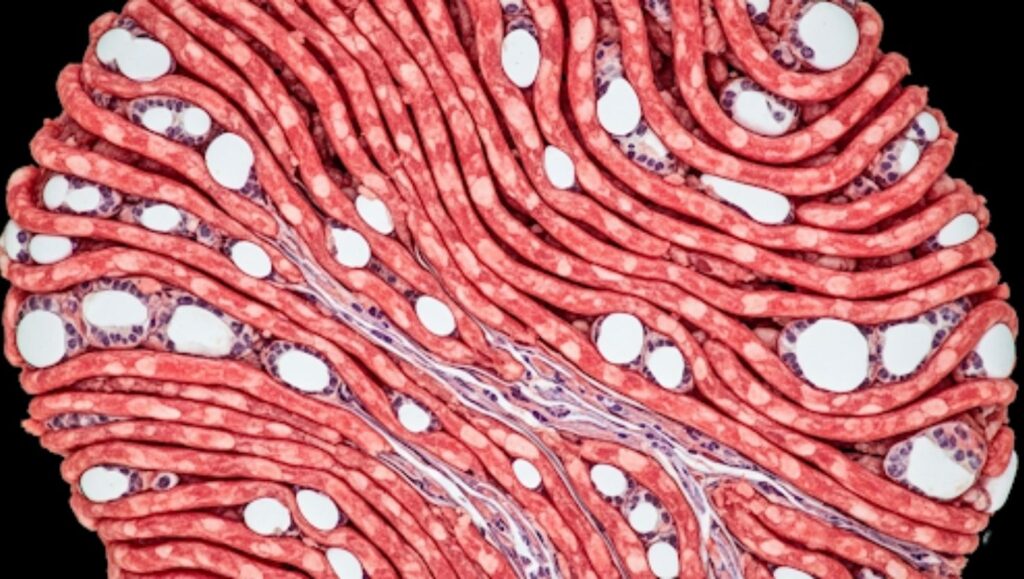
Additives: A Scientific Approach to Moisture Retention
While not essential with high-quality, high-fat beef, certain additives can provide an extra layer of insurance against dryness. These are not flavor hacks but functional ingredients grounded in food science.
The Panade Method
One of the most effective techniques is the use of a panade, a paste made from a starch (like fresh bread or breadcrumbs) and a liquid (like milk or buttermilk). When mixed gently into the ground beef, the starches and proteins in the panade absorb and retain liquid. During cooking, they swell and turn into a gel, physically trapping juices that would otherwise escape.
Adding More Fat
Another common technique among competitive chefs is incorporating additional, unrendered fat. Grating one or two tablespoons of frozen butter directly into the ground beef mixture creates small pockets of fat. As the burger cooks, these pockets melt, basting the meat from the inside and adding richness.
The Critical Role of Burger Cooking Techniques
Even the perfectly prepared patty can be ruined on the grill or skillet. The final steps of seasoning and cooking are where most moisture is lost. The great salting debate has a clear scientific answer. Salt should only be applied to the exterior of the patty just seconds before it makes contact with the hot surface. “Salting the meat mixture in advance, even 30 minutes before, will begin to cure the proteins,” a report from Serious Eats explains. This dissolved protein structure results in a denser, less tender burger.
Furthermore, cooking temperature is a crucial variable. Searing the burger on a very hot surface, like a pre-heated cast-iron skillet, is essential for developing a flavorful crust through the Maillard reaction. This crust does not “seal in juices,” a common myth, but it does provide critical flavor and texture. For maximum juiciness, cooking to a precise internal temperature using a meat thermometer is the most reliable method.
While many backyard grillers adhere to the “only flip once” rule, modern burger cooking techniques often challenge this notion. Frequent flipping can actually cook the burger more evenly and quickly, reducing the total time it spends on the heat and thereby retaining more moisture. Ultimately, the creation of truly juicy hamburgers is not about one trick. It is an application of scientific principles, from selecting the right fat content and handling the meat with care to mastering the final moments of cooking on a hot surface.
How the Mississippi Slugburger, a Depression-Era Staple, Became a Culinary Icon
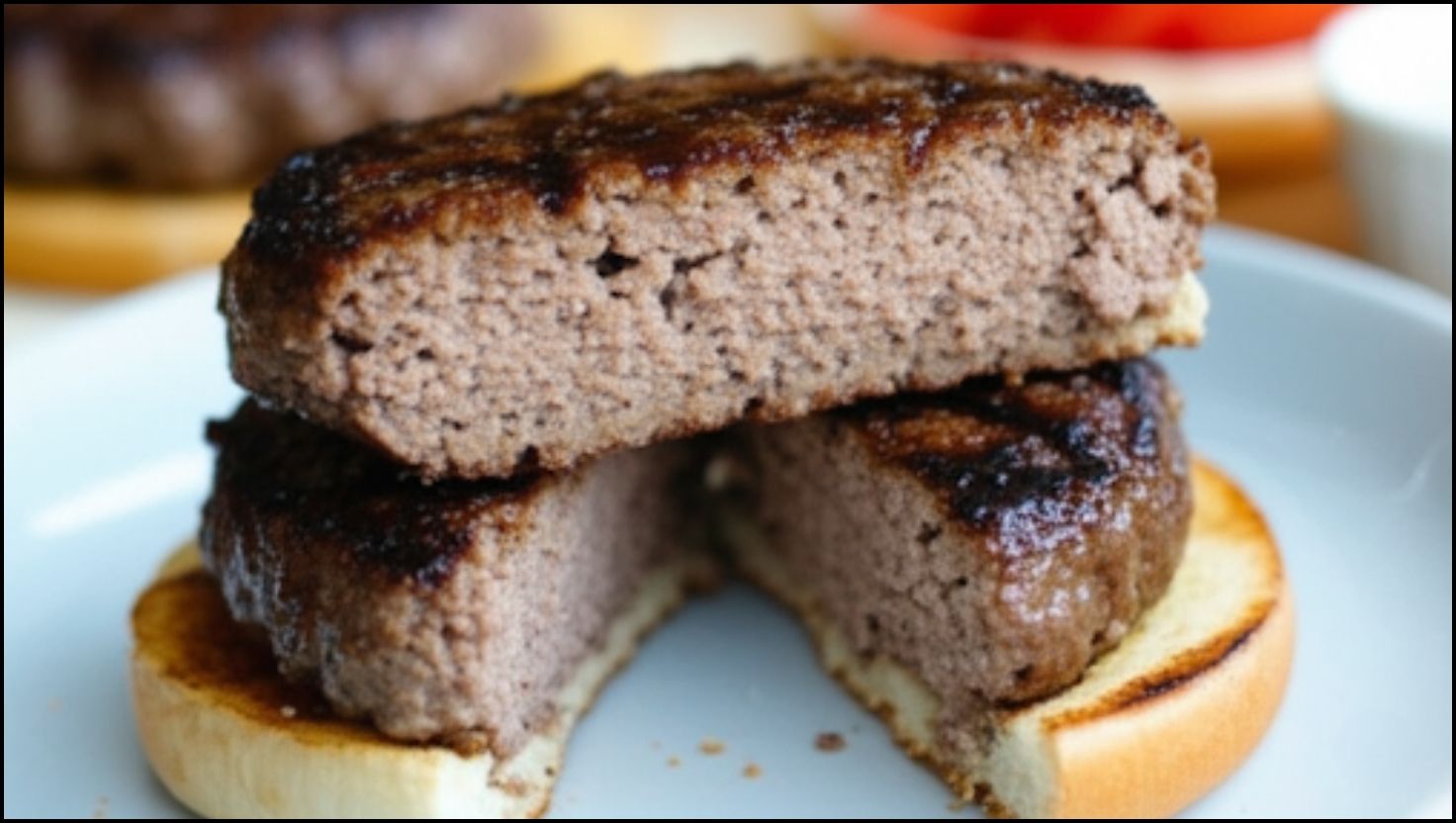

 How Quick Air Fryer Meals Are Reshaping the American Kitchen
How Quick Air Fryer Meals Are Reshaping the American Kitchen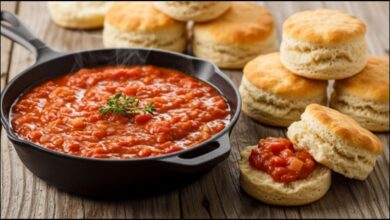 A Depression-Era Staple, Southern Tomato Gravy, Finds New Life in Modern Kitchens
A Depression-Era Staple, Southern Tomato Gravy, Finds New Life in Modern Kitchens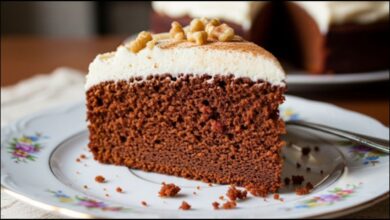 Why a Forgotten 1950s Cake with a Secret Ingredient Is Trending Again
Why a Forgotten 1950s Cake with a Secret Ingredient Is Trending Again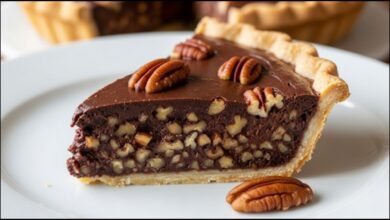 More Than a Dessert: How Tar Heel Pie Captures the Essence of North Carolina
More Than a Dessert: How Tar Heel Pie Captures the Essence of North Carolina